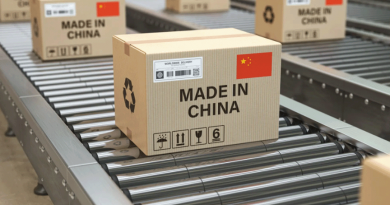Is the golden age of globalisation over?
Alessio Terzi is an Economist at DG ECFIN, European Commission
For the first time since the Great Recession merchandise world trade is on course to have fallen in 2019. At the same time, at the World Economic Forum in Davos, IMF chief economist Gita Gopinath presenting the Fund’s latest analysis of the world economy, showed how global growth in 2019 was likely around 3.2%. This is most interesting as historically global trade and GDP went hand in hand, but in 2019 the relationship seems to have broken.
To be fair, by historical standards, trade growth has been on somewhat of a soft patch since 2008. According to one reading, this was due first to cyclical factors, such as sluggish demand in Europe in the aftermath of the Great Depression, and is now due to one-off idiosyncratic factors, such as President Donald Trump’s trigger-happy tariff policies or, more recently, the impact of the coronavirus outbreak on global supply chains.
Taking the long-term view, there are however reasons to believe that even if Trump were not re-elected come November, and a phase-1 trade war truce were followed by a phase-2 trade agreement between the US and China, we would not return to the trade growth observed between 1970-2008: the golden age of globalisation. The economic considerations behind this prediction are several.
First, as discussed recently by Adam Tooze, elaborate supply chains require a certain degree of predictability. As the intellectual consensus on the desirability of unfettered free trade is irreparably broken, even without tariffs, businesses in certain sectors are shoring up against this risk, and are reducing their reliance on global value chains.
Second, labour-saving innovations such as robotisation and automation are likely to drive down production costs in advanced economies, and simultaneously require highly specialised services (eg. technicians for maintenance) that are more easily found in rich countries.
This will render the attractiveness of delocalising to countries where labour is cheaply available less appealing. Already today, trade in goods from low-wage to high-wage countries is down to just 18% of total, and this has been shrinking particularly in the textile segment.
Third, and linked to the previous point, new technologies such as 3-D printing, will increasingly require less and less shipping of products around the world, as production moves closer to consumer. In a recent study, the McKinsey Global Institute estimates the combined effect of these two developments could shave off up to $4 trillion to global trade by 2030.
Fourth, measures put in place to combat climate change, either in the form of carbon pricing or of carbon adjustment taxes, will inevitably increase global freight costs at least temporarily, until long-distance clean technology is developed and rolled out. This will put a further spanner in the works of global trade.
A structural decrease in trade could have far-reaching ramifications that go well beyond the simple Ricardian logic of gains from specialisation. In 2008, a group of experts in economic growth, led by Nobel laureates Robert Solow and Michael Spence, was tasked with scrutinising successful cases of sustained development and sifting out key general lessons.
While acknowledging that each country has its own peculiarities, the Commission on Growth and Development concluded that all successful cases took place on the back of a solid export expansion.
As argued by Harvard Professor Ricardo Hausmann, exports serve a double crucial role for development: first, only extensive world demand allows countries to specialise in new export lines and organically improve their productivity, since the division of labour is limited by the extent of the national market.
Second, more exports allow relaxing the so-called current account constraint. In plain terms, selling exports abroad provides the foreign currency needed by a country to import new inputs, technology, and products that make a quantum leap up the production value chain possible.
… the end of the golden era of globalisation might represent a closing window of opportunity for rapid convergence
In a similar vein, Dani Rodrik has long argued how manufacturing is the crucial social escalator that has allowed many countries to shift away from low-productivity agriculture, thanks to the fact that, traditionally, it did not require complex skills.
According to this reading, even if trade in services were to react positively to technological improvements, as predicted by Richard Baldwin, and more than compensate the loss in merchandise exports, this would hardly work to the benefit of economic development in the world’s poorest regions.
All this implies that a marked structural slowdown in trade would sharply reduce the likelihood of seismic growth acceleration episodes such as the ones observed in China and India, which were instrumental in achieving the lowest global poverty rate in recorded history.
While providing hope for many, these success cases might remain an exception in economic history. For poor countries that are yet to take off, the end of the golden era of globalisation might represent a closing window of opportunity for rapid convergence.
Alessio Terzi works in the economic strategy team at the European Commission. He is writing in his personal capacity.




